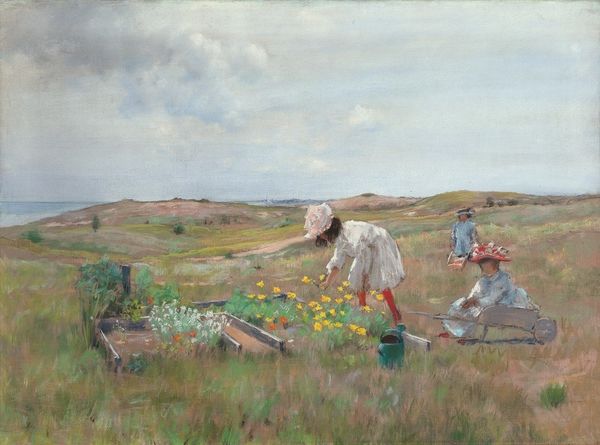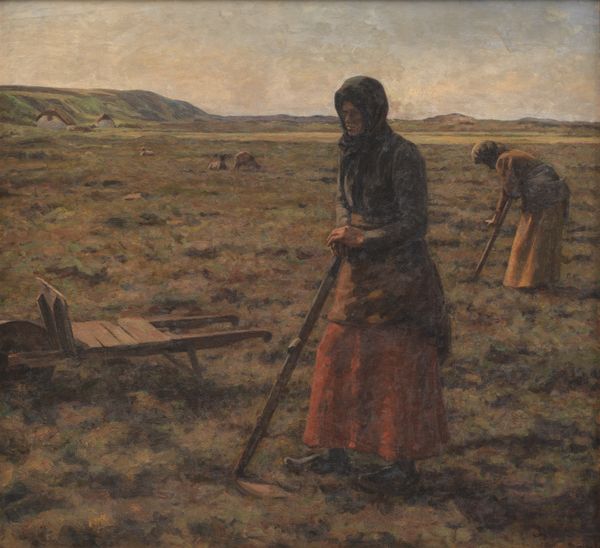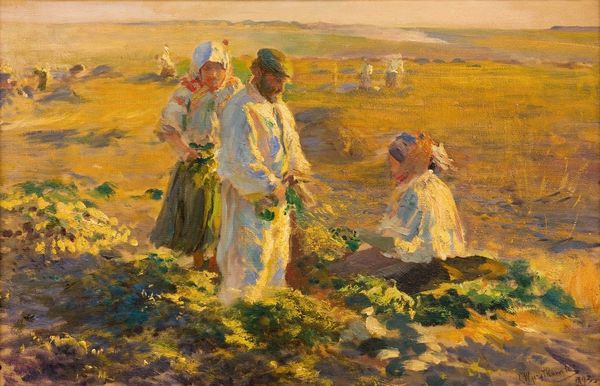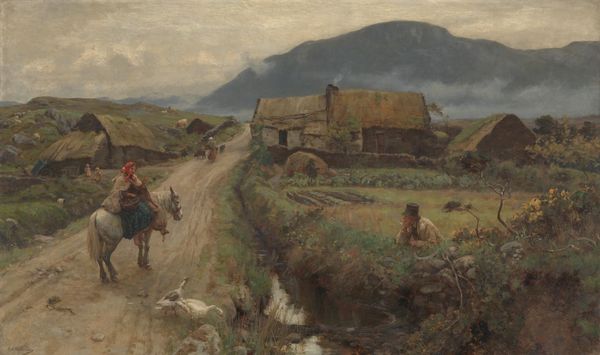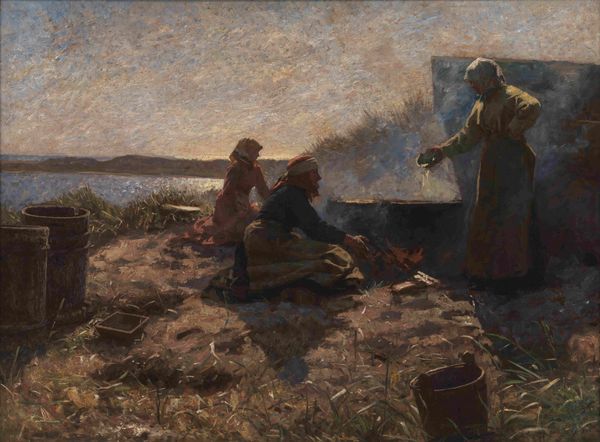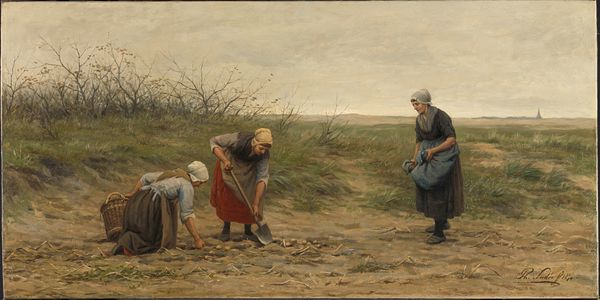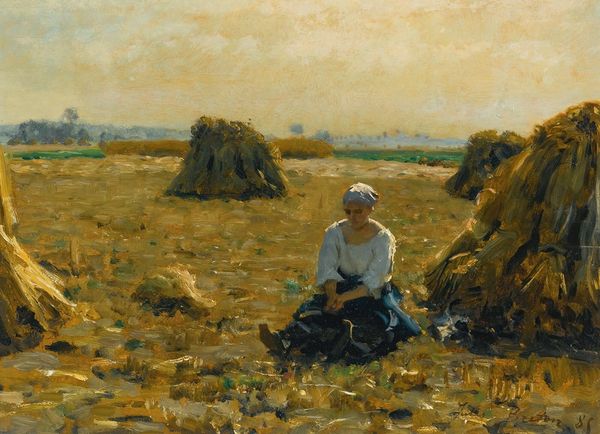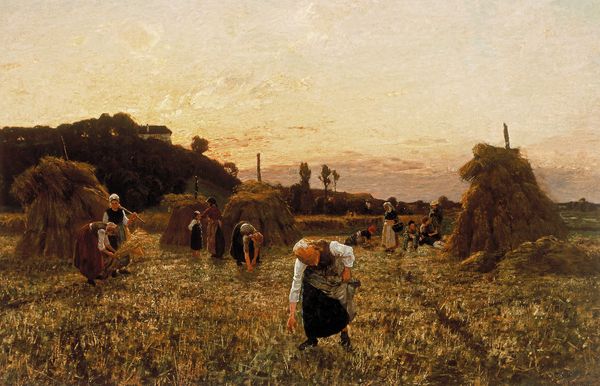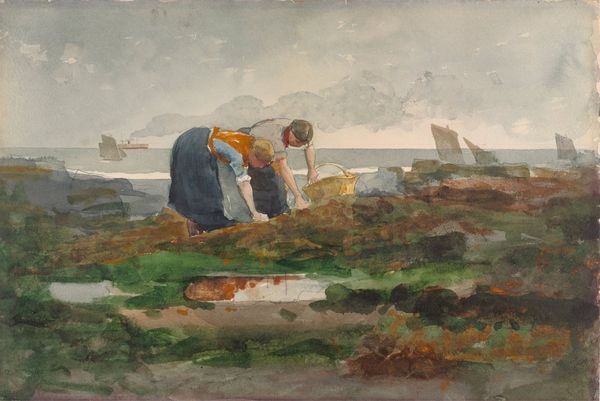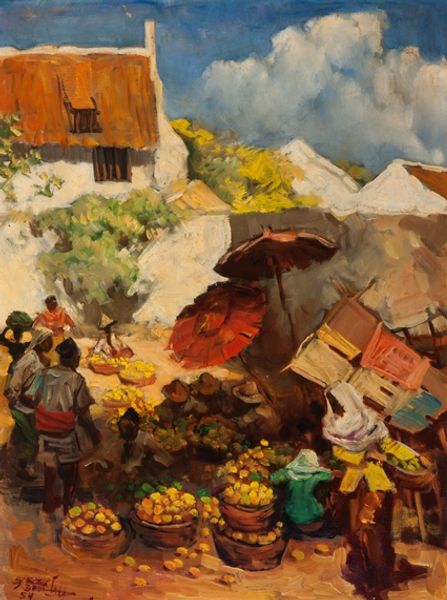
Copyright: Public Domain: Artvee
Curator: Leon Wyczółkowski's "Harvesting Beetroots II," created in 1911, is an oil painting which beautifully represents a moment in agrarian life. Editor: It strikes me immediately as being grounded and deeply human. There's a certain quiet dignity in the scene despite the likely arduous labor depicted. The colors are rich, earthy... and it feels real. Curator: The beetroot harvest carries potent symbols here: the recurring theme of land, work, and sustenance reflecting deep cultural memory. Farming isn't merely agriculture; it's woven into the very fabric of identity. Editor: Absolutely. This artwork situates these rural workers outside the city—peasants rather than bourgeoisie—as important subjects worthy of depiction. Look at the social structure in the late 19th, early 20th century, you'll understand it's quite significant. And to me, these agricultural workers and their crops become stand-ins for discussions about economic exploitation, rural labor, and class differences. Curator: There is indeed a duality. One can perceive both a realistic and symbolic tone in the choice of subjects and earthy palette. The enduring motifs related to hard work and resilience certainly suggest something archetypal at play. Editor: Also, consider the position of the female figure. Standing tall amid bent backs suggests a commentary on gender roles and resilience amidst the exploitation of women in agricultural economies. Wyczółkowski definitely challenges conventional representation of female workers. Curator: I can appreciate how this painting presents not only an everyday landscape, but also touches upon symbolic aspects associated with land and tradition that were, and perhaps still are, vital to this population’s perception of themselves and to the broader collective. Editor: Precisely. It is a snapshot in time, yet a mirror reflecting larger social concerns. It's both historical document and artistic expression, a potent combination. Curator: It seems we are drawn in by the different symbols at play. For me, it reaffirms how a simple agrarian task holds layers of symbolism about labor and heritage. Editor: And for me, it illuminates the ongoing dialogue between past inequalities and present struggles through visual culture, and challenges the power dynamics inherent in artistic representation.
Comments
No comments
Be the first to comment and join the conversation on the ultimate creative platform.

